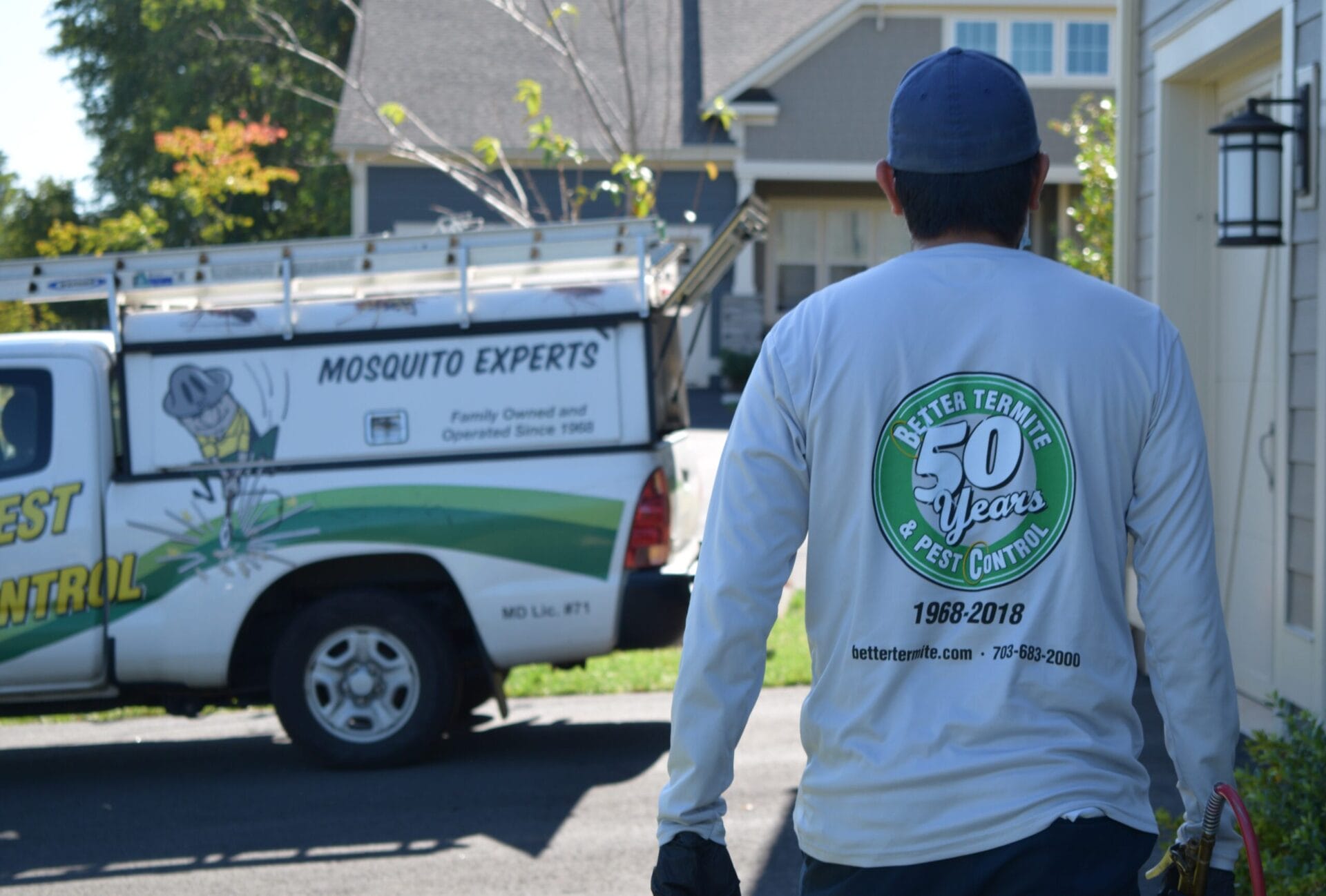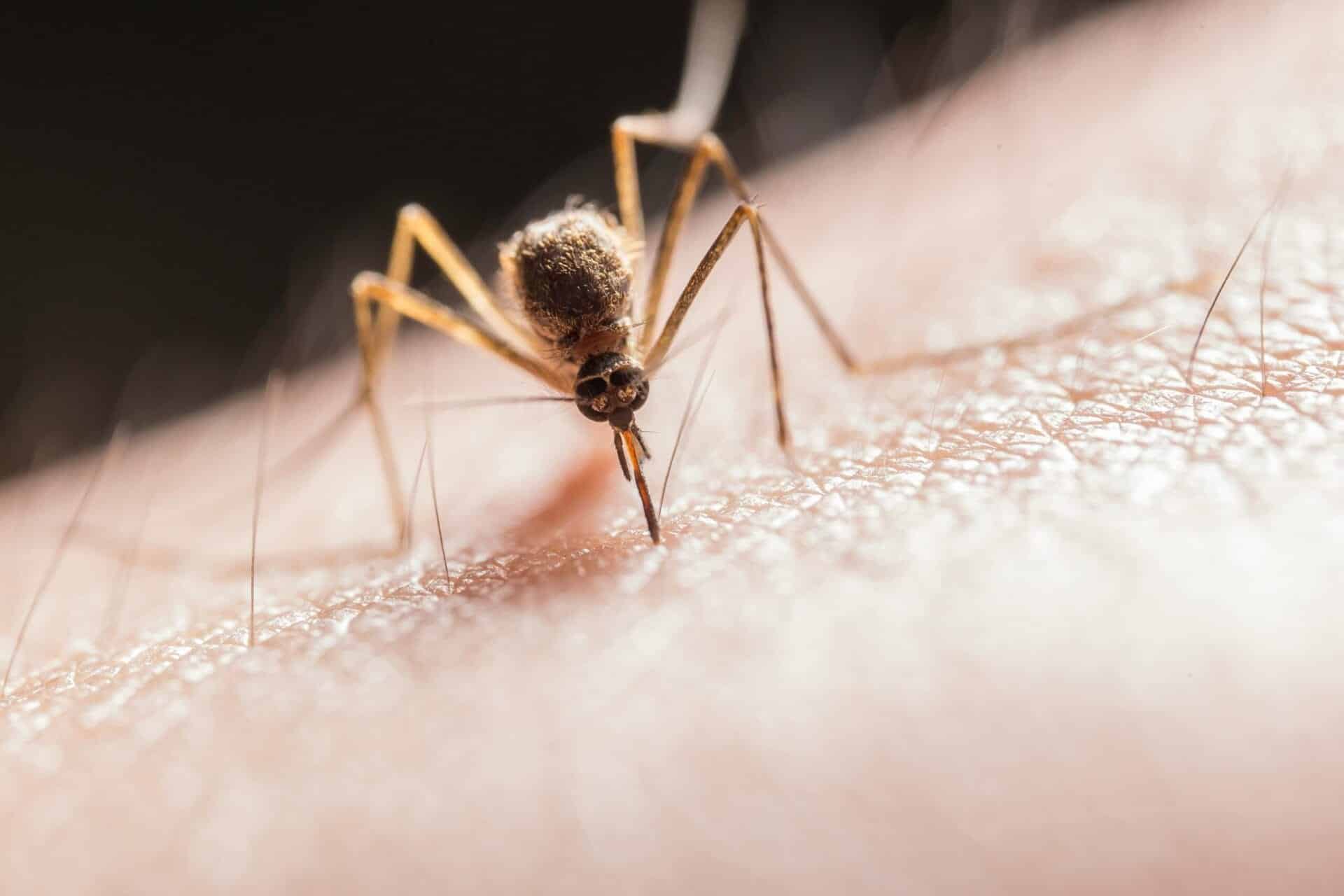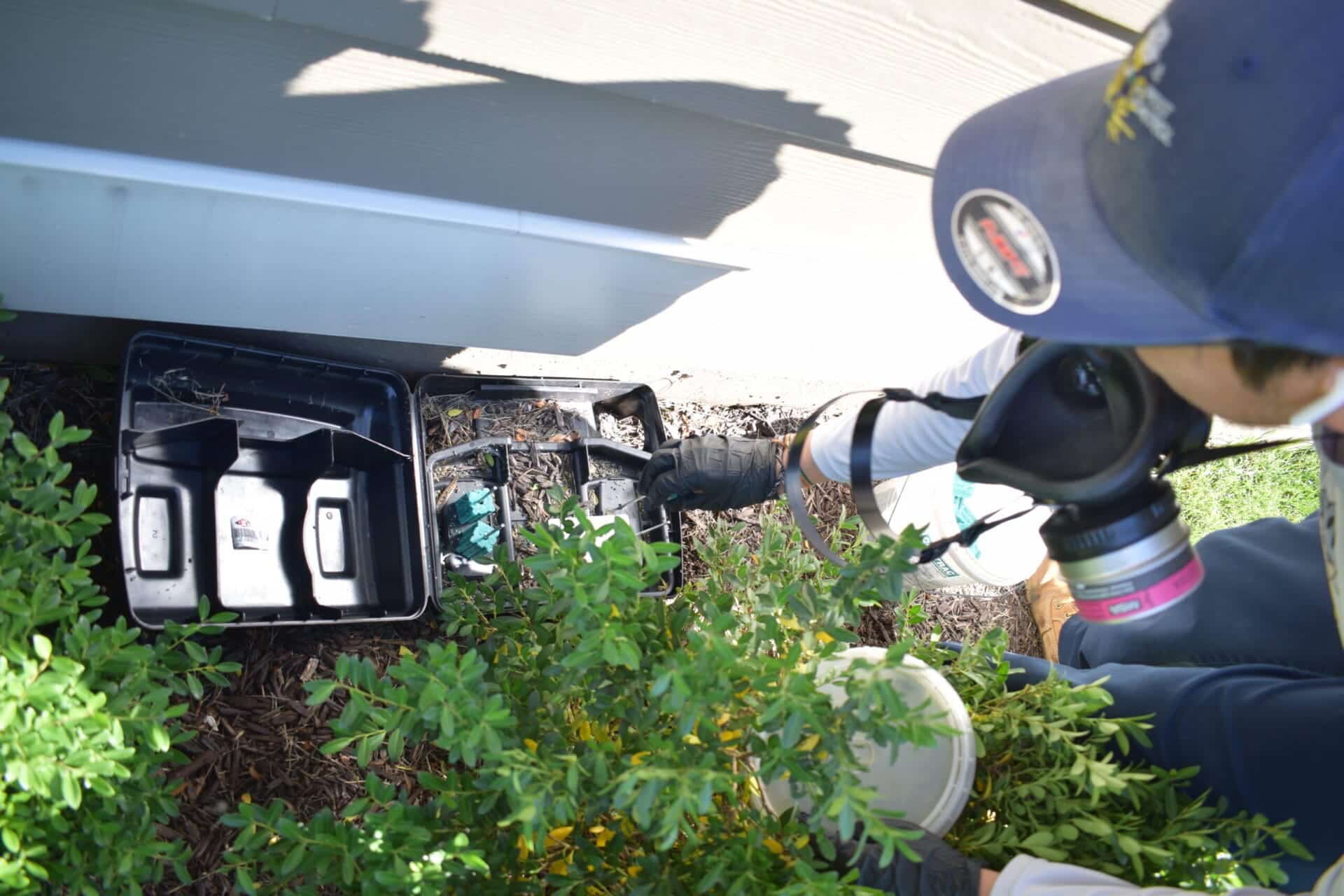


Quick Navigation
When you see bees buzzing around your home, the first step is knowing which type you’re dealing with. Many homeowners panic when they spot these insects, but not all bees pose the same challenges. Honey bees are beneficial pollinators that rarely cause property damage, while carpenter bees can damage wooden structures through their nesting habits.
After working in pest control for four years and helping families across the DMV area, I’ve learned that proper identification prevents unnecessary treatments. Our family business has been serving this region for over 50 years, and we’ve seen countless cases where homeowners wanted to eliminate beneficial honey bees instead of addressing actual carpenter bee problems.
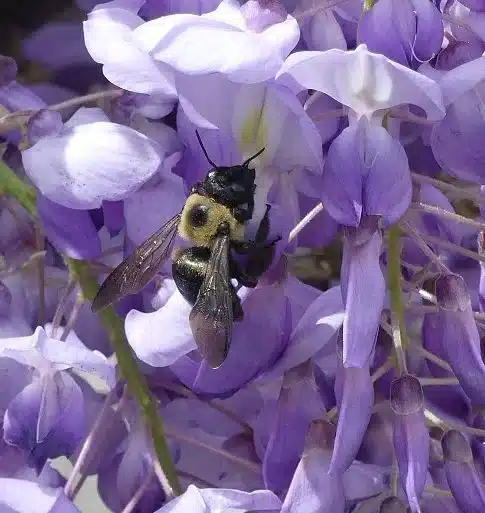
The fastest way to tell the difference between these species is by looking at their abdomens. Honey bees have fuzzy, striped abdomens with golden-brown bands, while carpenter bees sport shiny, black abdomens that look almost bald.
Size also helps with identification. Carpenter bees measure about one inch long, making them noticeably larger than honey bee workers. The significant difference becomes obvious when you see them side by side.
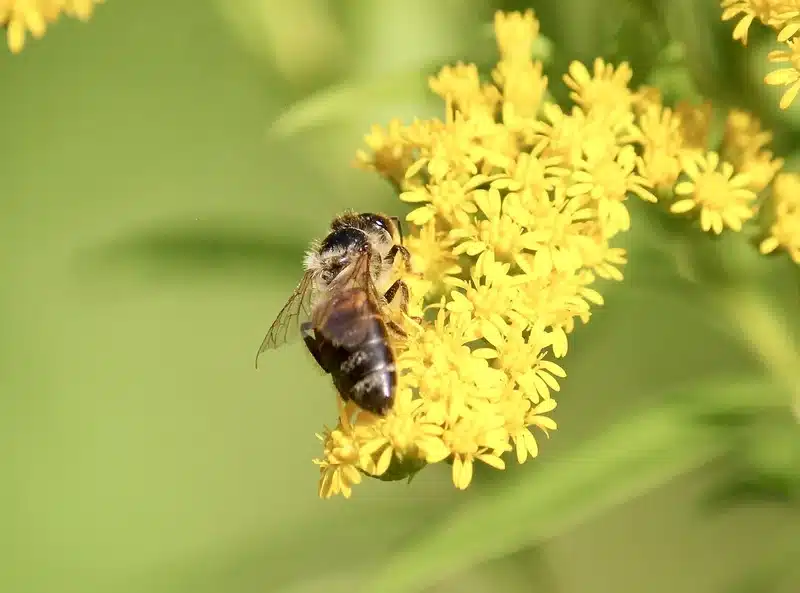

Male carpenter bees show additional identifying features with their pale-yellow faces, while females have completely black faces. Both sexes have fuzzy yellow thoraxes, but that shiny abdomen remains the key field mark.
🔍 Quick ID Tip: The easiest way to tell the difference between carpenter bees and honey bees is the abdomen – carpenter bees have shiny, black abdomens while honey bees have fuzzy, striped abdomens. This single feature works 99% of the time for accurate identification.
Carpenter bees and honey bees behave very differently around your property. Male carpenter bees hover aggressively near eaves and wooden structures, especially during spring. This territorial display looks threatening, but these male bees cannot actually sting.
Honey bees fly directly between their hive and food sources without the aggressive hovering behavior. They rarely sting unless provoked or when their hive is threatened. Both species feed on nectar and pollen from flowering plants, making them excellent pollinators.

When it comes to stinging ability, female carpenter bees can sting but rarely do so. Honey bees have barbed stingers that remain in the skin, causing them to die after stinging. This makes honey bees less likely to sting compared to other species of bees.
One major difference between carpenter bees vs honey bees lies in their social organization. Honey bees are social insects that live in large colonies with thousands of individuals. These bee colonies include a queen, worker bees, and seasonal drones working together in complex social hierarchies.
Carpenter bees are solitary insects, meaning each female creates her own nest without a colony structure. Female carpenter bees work alone to bore into wood to create nesting sites where they lay their eggs. This fundamental difference affects how you might encounter each species around your home.
Honey bees build elaborate wax combs inside their hive, while individual bees in carpenter bee populations create separate tunnel systems. The social nature of honey bees means you might see swarm activity during spring when new queens establish colonies.
Understanding where these bees create nests helps explain their different impacts on your property. Honey bees build their hives in tree cavities, wall voids, or managed beehives. They construct intricate wax combs and rarely cause structural damage to homes.
Carpenter bees nest directly in wood surfaces, creating perfectly round holes about half an inch in diameter. Female carpenter bees bore into wood to create a series of tunnels where they establish their new nest. These tunnels can extend several inches inside the wood, potentially weakening wooden structures over time.

The University of Maryland Extension notes that carpenter bees prefer unpainted, weathered wood for their nesting sites. Common targets include deck railings, eaves, siding, and outdoor furniture. Multiple generations can reuse and expand these tunnel systems over many years.
Both carpenter bees and honey bees serve as important beneficial insects in our ecosystem, providing essential pollination services that support both agriculture and natural ecosystems.
According to USDA research, honey bees are responsible for pollinating over 100 agricultural crops, contributing approximately $18 billion annually to U.S. agriculture. Their economic impact extends far beyond honey production.
Carpenter bees offer specialized pollination services through their “buzz pollination” technique, where they vibrate their flight muscles to shake pollen loose from flower anthers. This process helps crops like tomatoes, eggplants, and blueberries release pollen more effectively than other pollinators can achieve, making them crucial for certain agricultural systems.

Native bees, including eastern carpenter bees, complement honey bee populations by pollinating plants during different seasons and weather conditions. Both bee species play crucial roles in maintaining healthy gardens and natural ecosystems.
Not every bee sighting requires pest control intervention. Honey bees should almost never be treated as pests since they provide essential pollination services and rarely cause property damage. If you discover a honey bee swarm or hive near your home, contact a local beekeeper rather than an exterminator.
Carpenter bees become a concern when their tunneling activity threatens wooden structures. A single cavity rarely compromises structural integrity, but multiple generations creating extensive tunnel networks can weaken important building elements.
Look for these warning signs of carpenter bee infestation:
Many homeowners also confuse carpenter bees with bumble bees, another common species. Bumble bee abdomens are fuzzy like honey bees, but they’re larger and often have different color patterns. Bumble bees are social insects that nest underground or in small cavities.
The key difference between the two is that bumble bees resemble carpenter bees in size but have completely fuzzy abdomens instead of the shiny black appearance. Bumble bees also don’t damage wood since they create nests in existing cavities or underground burrows.
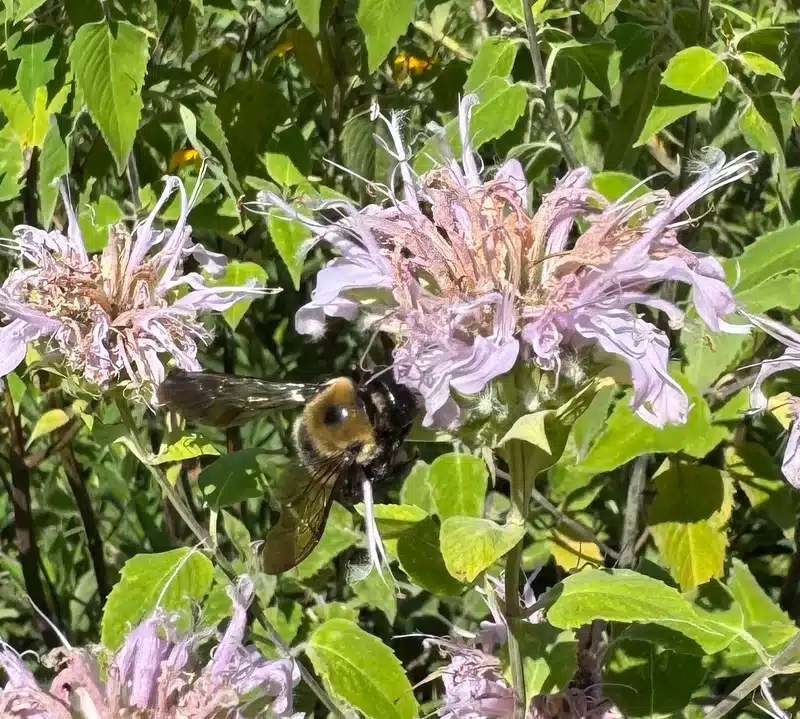
For more detailed comparisons, check out our guide on carpenter bee vs bumblebee identification to help distinguish these similar-looking species.
The approach to managing these bees differs significantly based on species identification. For honey bees, the goal is protection and relocation when necessary. Never attempt to eliminate honey bee colonies, as they’re vital pollinators protected in many areas.
Carpenter bee control focuses on prevention and targeted treatment when damage occurs. The most effective approach involves:
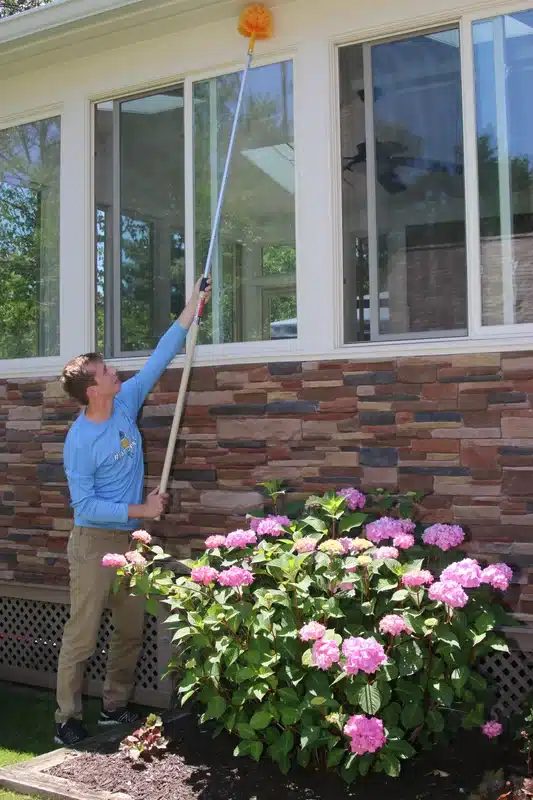
Our approach emphasizes protecting beneficial species while addressing problematic carpenter bee activity. We’ve eliminated nine harsh chemicals from our treatment programs, choosing alternatives that target specific pest issues without harming beneficial insects unnecessarily.
Understanding when each species is most active helps with identification and management timing. Honey bees maintain activity throughout most of the year, with peak swarming activity occurring during April and May in the DMV region.
Carpenter bees show distinct seasonal patterns. Overwintering adults emerge in April to begin new nest construction. This spring activity period is when you’ll see the most hovering behavior from territorial males. New adults emerge during mid-summer, then seek overwintering sites in late summer.
Effective carpenter bee management targets this spring emergence period before extensive tunneling begins. Treatment timing during late winter or early spring prevents new nest establishment while minimizing impact on beneficial pollinator activity.
When you’re unsure about bee identification or dealing with extensive activity, professional assessment ensures appropriate management. Our registered technicians can quickly tell them apart and recommend species-specific approaches that protect beneficial insects while addressing legitimate pest concerns.
We’ve helped thousands of DMV homeowners distinguish between beneficial honey bee activity and problematic carpenter bee infestations. Our carpenter bee damage assessment service identifies the extent of existing tunneling and provides targeted solutions.
Professional treatment offers advantages like proper timing, species-appropriate methods, and follow-up monitoring. We also provide guidance on preventing future infestations through structural modifications and maintenance practices.
If you’re seeing significant bee activity around your home, proper identification is the first step toward effective management. Don’t let uncertainty about bee species lead to inappropriate treatment of beneficial pollinators or inadequate control of wood-damaging carpenter bees.
Our experienced team can help you tell the difference between these important species and develop a management plan that protects both your property and beneficial insects. Contact us at 703-683-2000 or email info@bettertermite.com for expert identification and treatment options tailored to your specific situation.
Don’t let uncertainty about bee species lead to wrong treatment decisions. Get professional identification to protect beneficial pollinators while controlling wood-damaging carpenter bees.
The easiest way to distinguish these species is by looking at their abdomens. Carpenter bees have shiny, black abdomens that appear almost bald, while honey bees have fuzzy, striped abdomens with golden-brown bands. Carpenter bees are also noticeably larger, measuring about one inch compared to honey bees’ smaller size.
Male carpenter bees appear more aggressive due to their territorial hovering behavior around wooden structures, but they cannot actually sting. Female carpenter bees can sting but rarely do unless directly handled. Honey bees are generally less aggressive and only sting when their hive is threatened or they feel directly threatened.
While both are large bees, bumble bees have completely fuzzy abdomens like honey bees, whereas carpenter bees have distinctive shiny black abdomens. Bumble bees nest underground or in small cavities and don’t damage wood structures. Carpenter bees bore round holes directly into wood to create their nests.
Individual carpenter bee tunnels rarely cause structural problems, but multiple generations can create extensive tunnel networks that weaken wooden elements over time. The damage becomes more concerning when combined with moisture infiltration and secondary issues like woodpecker damage from birds seeking carpenter bee larvae.
No, honey bees should be protected rather than eliminated. They’re essential pollinators that rarely cause property damage. If you discover a honey bee hive or swarm on your property, contact a local beekeeper for safe relocation rather than using pest control methods.
Carpenter bees are most active during spring months (April through June) when adults emerge from overwintering sites to establish new nests. This is when you’ll see the most hovering behavior from males and hear drilling sounds from females creating tunnel systems in wood surfaces.
Female carpenter bees can sting multiple times since they don’t have barbed stingers. Honey bees have barbed stingers that remain in the skin after stinging, which kills the bee, so they can only sting once. Male carpenter bees cannot sting at all despite their aggressive hovering displays.
Carpenter bees prefer unpainted, weathered, or soft wood for nesting. They’re particularly attracted to exposed wood surfaces like deck railings, eaves, siding, and outdoor furniture. Painted or treated wood is less appealing to them for tunnel construction.

With five years of hands-on experience in the pest control industry, George Schulz is a registered technician with the Virginia Pest Management Association and a proud third-generation professional in a family business that’s been protecting homes for over 57 years. He manages and trains a team of service pros while also leading internal research efforts—recently spearheading a deep-dive review of thousands of documents on pest control materials to hand-pick the most kid and pet friendly, most effective solutions tailored specifically for homes in the DC metro area. Read his bio.

